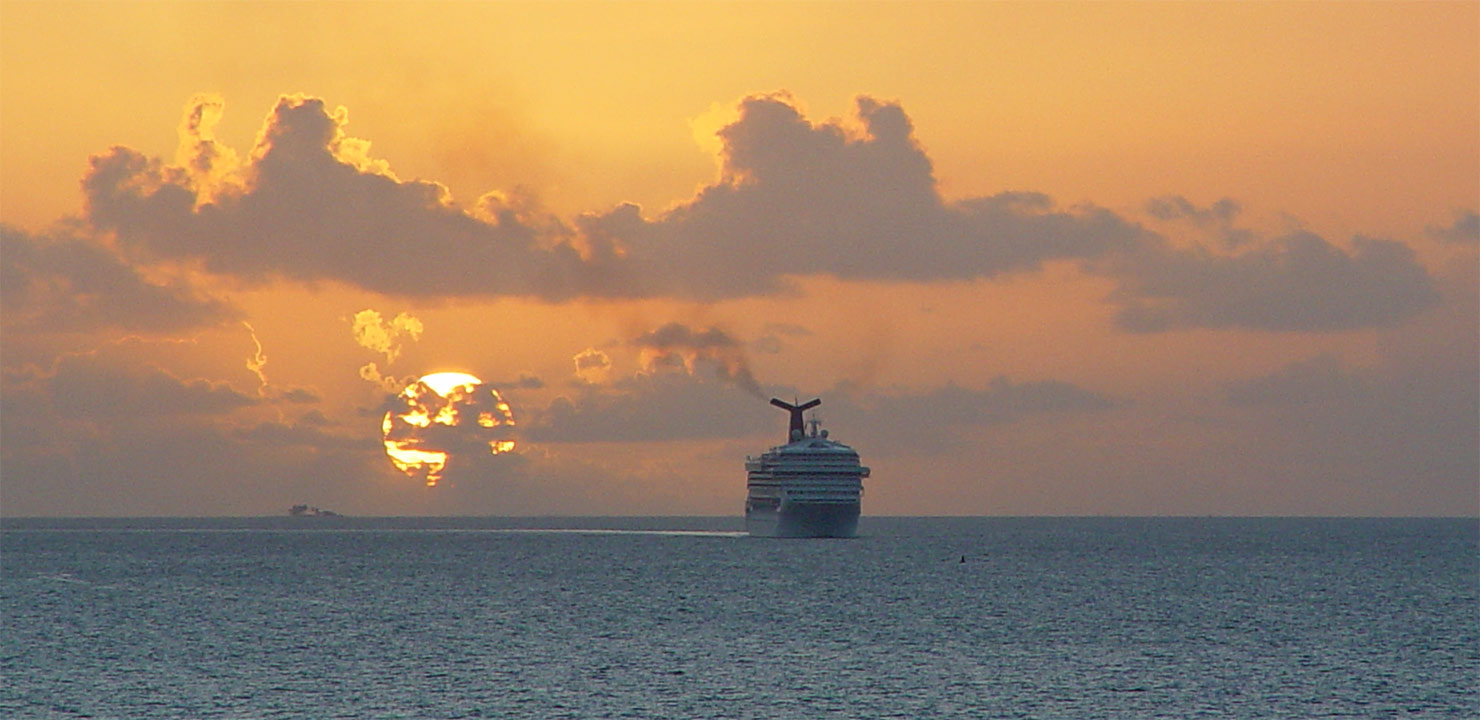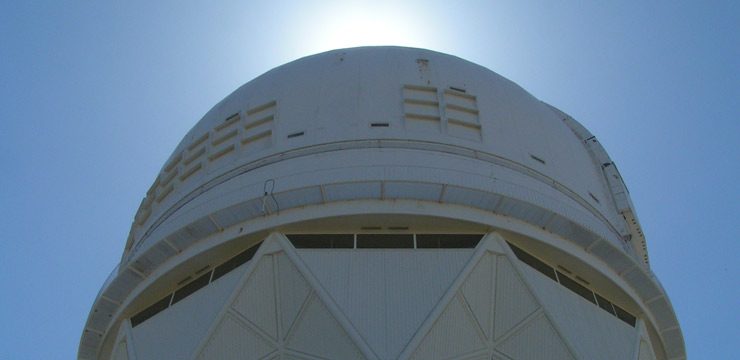
Southern Viewing at Sea
March 2010 :
This year my wife and I had booked a cruise to the Eastern Caribbean during January. We planned to fly to Tampa, Florida and stay with my parents the day before and drive to Fort Lauderdale, to catch the ship. My parents would be joining us on the cruise as they did two years previously.
The ports of call on the March, 2008 cruise were in the Western Caribbean. During that cruise we visited San Juan, Puerto Rico, St. Thomas, V.I., Dominican Republic, and Haiti. This January, of 2010 the cruise included the cities of Belize City, Belize and Costa Maya, and Cozumel, Mexico.
My advice to all considering a cruise is to bring with you either large pair of binoculars or a small aperture telescope. One would think conditions on the ship would provide both enhancements and some challenges for viewing. The dark sites achieved at sea are fantastic with slight interference from the ship lighting. The low elevation and the possibility of a thin fog that may arise depending on water verses air temp are the main challenges. The other perceived issue most would think is the movement of the ship on water, but my experience on both cruises has shown this not to be significant obstacle due to the ships size and calm seas. On both cruises we had balcony suites, nothing like having the view of the sea 24/7. It’s nice to have an early morning coffee, a late night drink or to just get away by your selves for a while. It also provides a great observing platform after the sun has set and skies have darkened.
The first cruise I packed a pair of Zhumell 20x80 binoculars and a simple camera tripod. Each night after dinner and various entertainments, we would retire to our stateroom and I would break out the equipment and set up on the balcony. This trip as with the next located us between the latitudes of 15 and 25 degrees. The first observation I made was how high the constellation Orion was positioned in the sky. It was floating 10 to 15 degrees down from directly overhead and stood out brightly every night. The 20x80’s easily detected the nebulosity of the Orion Nebula centered in Orion’s sword. The Southern Cross was the other celestial gems that stood out, a site we in the north are unable to enjoy. On the evening of March 14, 2008, we set sail from Labadie, Haiti for our return to the US. I set up on the balcony and began scanning the southern horizon.
Situated to the ESE at about 10 degrees above the horizon was Spica and to the SSW was Canopus. As I scanned from west to east I came upon large group of stars in three tight groups. The two larger groups stacked one above the other to almost appear as one and within a distinct nebulous glow. Inside the FOV and to the north and slightly to the west was the smaller group of which I detected no nebulosity. As I panned to the east and just prior to these three clusters falling out of the FOV, I came upon two bright stars, one above the other spaced at an angle of each other. One was a distinctive red in color and the other white. As I continued east, and again just prior to these two stars exiting the FOV, I came upon another great tight cluster of stars. This cluster was smaller in size than the close nebulous pair and appeared extended from east to west. It also had a flatten appearance on the bottom while the top was rounded like a rolling hill. When I referenced a computer version of TheSky software and the internet, I was able to identify that I had observed first the Eta Carina (Key Hole Nebula) NGC 3372 with NGC 3293 to the NE and NGC 3532 to the west. The two stars between were SAO 238574, spectral K0III-IV and SAO 238570, spectral B5V. This was an unforgettable view that I will always remember, see the attached sketch from my log book.
Our second cruise this past January, I packed an IOptron 80mm reflector and a small tripod as well as 5, 15, 20, and 40mm lenses. This cruise provided views of Jupiter setting in the west and Mars rising in the east. This cruise did not have the exceptional viewing conditions of the first; we had more clouds drifting in and out of view. We also had occasions when haze obscured the horizon slightly due to air and water temperature variations. Orion was positioned slightly high than the last cruise and with the use of the lenses available the fish mouth of the Orion Nebula could be seen. During our port of calls and as we sailed back from Belize, our balcony faced the south. Canis Major was entirely in view standing on it rear legs to the south with Sirius shining brightly. I soaked in for quite some time, the view that my home in the north does not offer. While exploring Canis Major I came upon M41, an Open Cluster, which I struggle to see at home due to the tree line in my backyard and the glow of the cities of Woonsocket and Providence to the south. On this cruise I was unable to surpass the views I had on the first, but this by no means was disappointing, the views were still great.
The quiet time below the stars while the sound of the ocean lightly washing against the ship below can’t be beat. The darks skies and the views of the celestial wonders we are not offered here in the north are beautiful. I strongly suggest that if you have the opportunity to vacation in the south, even if it’s on a cruise, bring either binoculars or a telescope and take in the heavenly sights.
Related Topics




